Table of Contents
The Osmania University releases the TS ECET syllabus every year for the Telangana State Engineering Common Entrance Test (TS ECET). The TS ECET Syllabus 2024 will be released by Osmania University online on the official website. The TS ECET Syllabus 2024 will certainly be the same as the previous year. The TS ECET 2024 Syllabus will be made available at ecet.tsche.ac.in. The subjects, units, and topics that must be studied for the entrance exam will become clear to candidates through the TS ECET syllabus 2024.
TS ECET Syllabus 2024
Candidates appearing for the TS ECET 2024 exam must be familiar with the TS ECET syllabus 2024. The TS ECET syllabus 2024 is the main reference material that will guide students about what to study for the exam. It is suggested that candidates review the TS ECET syllabus 2024 in order to increase their chances of receiving good marks and to be well-prepared for the test. The TS ECET 2024 exam date is 6 May 2024. Osmania University releases the TS ECET syllabus on behalf of TSCHE (Telangana State Council of Higher Education).
The TS ECET Syllabus 2024 consists of Physics, Chemistry, Mathematics, and different engineering subjects. The TS ECET question paper will be prepared by the authorities using the syllabus as a guide. It is recommended that applicants review the TS ECET 2024 exam pattern in addition to the syllabus. The TS ECET 2024 registration process is currently underway since 15 February 2024.
TS ECET 2024 Syllabus
The subjects covered in the TS ECET 2024 syllabus are necessary for entrance exam preparation. Candidates can better organize their study schedule and allot time to each topic by using the TS ECET curriculum as a guide. The Osmania University has also released all the official dates for the TS ECET 2024 exam. The highlights of the TS ECET 2024 is given below.
| TS ECET 2024 Highlights | |
| Description | Details |
| Name of the exam | TS Engineering Common Entrance Test (ECET) |
| Category | Syllabus |
| Syllabus Release Status | Not Released |
| Syllabus Release Date | Last Week of February 2024 (Tentative) |
| Syllabus Subjects | Physics, Chemistry, Math, various Engineering subjects |
| Starting date to Apply | 15th February 2024 |
| Last date to apply (without late fees) | 16th April 2024 |
| Submission of application form with late fee of Rs. 500 | 22nd April 2024 |
| Submission of application form with late fee of Rs. 1000 | 28th April 2024 |
| Submission of application form with late fee of Rs. 5000 | 27th April 2024 |
| Application Correction Starts | 24th April 2024 |
| Application Correction Ends | 28th April 2024 |
| Hall Ticket Download | 1st May to 5th May 2024 |
| Date of Exam | 6 May 2024 |
| Result Declaration date | 4th week of May 2024 |
| Official Website | ecet.tsche.ac.in |
TS ECET Syllabus 2024 Subject Wise
The detailed syllabus for different subjects asked in the TS ECET 2024 exam is provided below in the articles for students. The TS ECET syllabus consists of topics relevant in the TS ECET 2024 exam in the concerned subjects. The TS ECET syllabus 2024 for Physics, Chemistry, Mathematics, Biotechnology, BSc (Mathematics), Civil Engineering, Chemical Engineering, Computer Science and Engineering, Mechanical Engineering, etc. is provided below in detail along with the PDF.
Also Check: JEE Main 2024 Session 2 Application Form
TS ECET 2024 Syllabus for Physics
The following chapters are included in the TS ECET Physics syllabus 2024.
- Unit-I: Units and dimensions
- Unit-II: Elements of vectors
- Unit-III: Kinematics and Friction
- Unit-IV: Work, Power and Energy
- Unit-V: Simple harmonic motion and Sound
- Unit-VI: Heat and Thermodynamics
- Unit-VII: Modern physics
TS ECET Syllabus 2024 for Chemistry
- Unit-I: Fundamentals of Chemistry (Atomic structure, Chemical Bonding)
- Unit-II: Solutions
- Unit-III: Acids and Bases
- Unit – IV: Principles of Metallurgy
- Unit-V: Electrochemistry
- Unit –VI: Corrosion
- Unit-VII: Water Technology
- Unit-VIII: Polymers
- Unit-IX: Fuels
TS ECET Syllabus 2024- Mathematics
The mathematics syllabus topics for the TS ECET 2024 is given below.
- Unit-I: Matrices
- Unit–II: Trigonometry
- Unit–III: Analytical Geometry
- Unit–IV: Differentiation and its Applications
- Unit–V: Integration and its Applications
- Unit–VI: Differential Equations
- Unit–VII: Laplace Transforms and Fourier series
- Unit–VIII: Probability and Statistics
TS ECET 2024 Syllabus for Civil Engineering
The following table represents the TS ECET 2024 syllabus for civil engineering for all units.
| Units | Syllabus |
| I | Simple stresses and strains- ductile materials – Mechanical properties of materials- Hooke‘s law-lateral strain-Poisson‘s ratio-Elastic constants and the relation between them Composite sections-Resilience-Strain energy-Gradual and sudden loading- Shear force and Bending Moment Diagrams for cantilever, Simply supported, fixed, continuous and overhanging beams subjected to Point loads and UDL |
| II | Theory of simple bending-assumptions-bending equation-bending stresses-Section Modulus-Shear stress distribution across various sections like rectangular, circular and I- sections, Torsion-solid and hollow circular shafts |
| III | Deflection of cantilevers and simply supported beams, Double Integration and Macaulay‘s methods, Mohr‘s theorems for slopes and deflections, the calculation for propped cantilevers subjected to simple loading-Analysis of Fixed and Continuous beams of uniform section for simple loading without sinking of supports |
| IV | Grades of concrete, characteristic strength, Modulus of Elasticity-I.S. 456 -2000- Philosophy of Limit state design. Limit state of Strength and Serviceability, partial safety factor-design strength of materials and design loads-assumptions |
| V | Basic principles, neutral axis, lever arm – Design and analysis of Singly reinforced simply supported rectangular beams. Comparison of Limit state and Working stress methods |
| VI | Chain surveying- purpose and principle- errors and corrections- different operations in chain surveying- obstacles – methods of calculation of area. Compass Surveying- purpose and principle- bearings- traversing using a prismatic compass- local attraction- errors. Levelling- definitions- component parts- errors- classification of levelling- contouring- characteristics and methods |
| VII | Fluid properties-specific weight –mass density-specific gravity-surface tension- capillarity-viscosity. Atmospheric pressure, gauge pressure and absolute pressure. Fluid pressure on plane surfaces – Centre of pressure, measurement of fluid pressure using piezometer and manometers. Types of flows-uniform, non-uniform, steady, unsteady, laminar and turbulent flows. Energies of liquid in the motion-continuity equation. Bernoulli‘s theorem-Pitot Tube Venturimeter. Flow-through small and large orifices, free orifices, submerged orifices, coefficients of orifices-Cc, Cv and Cd. Flow-through internal, external, convergent and divergent mouthpieces. Types of Notches-rectangular and triangular, flow over notches. Types of Weirssharp crested and broad crested-mathematical formulae for discharge-Francis and Bazin |
| VIII | Flow-through pipes-major and minor losses-Chezy‘s and Darcy‘s formulae for loss of head due to friction- HGL & TEL- Reynold‘s number for laminar and turbulent flows. Flow-through open channels-rectangular and trapezoidal-chezy‘s formula for discharge-Kutter‘s and Manning‘s equation for Chezy‘s constants-Most economical sections. Centrifugal pumps without problems. Classification of Turbines- Kaplan, Francis and Pelton wheel without problems of the Draft tube. Hydro-electrical installations-components and uses |
| IX | Necessity of Irrigations – Perennial and inundation Irrigation, Flow and Lift Irrigation, Principal crops-Kharif and rabi seasons-Duty, delta and base period. Methods of Irrigation-check flooding, basin flooding, contour bunding, furrow, sprinkler and drip Irrigation |
| X | Storage Head works – different types of dams-rigid and non-rigid dams- gravity dams-low and high dams. Elementary profile of a dam. Failures of gravity dams-drainage galleries. Ogee and siphon spillways. Earth dams – types, failures and precautions. Phreatic lines and drainage arrangements in earthen dams. Distribution works-classifications and alignment of a canals-typical cross-section of a canal-berm and balanced depth of cutting-canal lining. Cross drainage works – types and functions |
| XI | Importance of transportation engineering – I.R.C. – Classification of roads as per I.R.C., recommended I.R.C. values of camber for different roads. Gradients – Ruling gradient, limiting and exceptional gradient Recommended I.R.C values of gradients., Different systems of classification of soils – Textural classification – I S classification of soils., Bearing capacity – importance in foundation design |
| XII | Environment and Ecology– Ecology and Ecosystem, Quality of water, Need for protected water supply, Total quantity of water for a town, per capita demand and factors affecting demand, Forecasting population by arithmetical, geometrical and incremental increase methods, Sources and conveyance of water: surface sources, underground sources, Types of Intakes |
| XII | Loads considered in the design of steel structures as per I.S. 875-1987, Standard structural sections, Concept of Limit State Design. Design of Fillet Welded Joints- types of joints, stresses in welds as per I.S.800-2007. Tension members and forms of tension members, different modes of failures, calculation of net effective sectional area of single angle with welded connection only. Different forms of compression members. The behaviour of compression members- classification of cross-sections, effective lengths for different end conditions- Codal provisions of single or double lacing and battening for built-up columns(no problems). |
TS ECET Syllabus for Mechanical Engineering 2024
- Workshop Technology
- Welding, Forging, Foundry and Conventions in Drawing
- Engineering Materials, and Engineering Mechanics
- Mechanics of Solids
- Design of Machine Elements
- Thermodynamics
- Fluid Mechanics and Hydraulic Machines
- Energy Sources and Power Plant Engineering
- Refrigeration – Air Conditioning and Automobile Engineering
- Industrial Management and Engineering
Read: JEE Mains Exam Pattern 2024
TS ECET 2024 Syllabus for BSc (Mathematics)
Unit I
Differential Equations of First Order and First Degree: Linear Differential Equations; Differential Equations Reducible to Linear Form; Exact Differential Equations; Integrating Factors; Change of Variables. Differential Equations of the First Order but not of the First Degree: Equations Solvable for p; Equations Solvable for y, Equations Solvable for x; Equations that do not contain x (or y); Equations Homogeneous in x and y; Equations of the First Degree in x and y; Clairaut‘s Equation
Unit II
Higher Order Linear Differential Equations: Solution of Homogeneous Linear Differential Equations of Order n with Constant Coefficients. Solution of the Non-homogeneous Linear Differential Equations with Constant Coefficients by means of Polynomial Operators.
Unit III
- Binary Operations: Definition and Properties, Tables.
- Groups: Definition and Elementary Properties; Finite Groups and Group Tables.
- Subgroups: Subgroups; Cyclic Subgroups
- Permutations: Functions and Permutations; Groups of Permutations, Cycles and Cyclic Notation, Even and Odd Permutations, The Alternating Groups
- Cyclic Groups: Elementary Properties, The Classification of Cyclic Groups, Subgroups of Finite Cyclic Groups
- Isomorphism: Definition and Elementary Properties, How to show that groups are Isomorphic, How to show that Groups are Not Isomorphic, Cayley‘s Theorem.
- Groups of Cosets: Cosets, Applications, Lagranges Theorem, Normalizer of an element of a group
- Normal Subgroups and Factor Groups: Criteria for the Existence of a Coset Group; Inner Automorphisms and Normal Subgroups; Factor Groups; Simple Groups
- Homomorphisms: Definition and Elementary Properties; The Fundamental Theorem on Homomorphism of groups; Applications.
Unit IV
- Vector Differentiation: Differential Operator, Gradient, Divergence, Curl
- Vector Integration: Theorems of Gauss, Green and Stokes and Problems related to them
Unit V
- The Plane: Every equation of the first degree in x, y, z represents a plane, Converse of the preceding Theorem; Transformation to the normal form, Determination of a plane under given conditions.
- The Sphere: Definition and equation of the sphere; Equation of the Sphere through four given points; Plane sections of a sphere.
Unit VI
- The Real Numbers: The algebraic and Order Properties of R; Absolute Value and Real Line; The Completeness Property of R; Applications of the Supremum Property; Intervals.
- Sequences and Series: Sequences and their Limits; Limits Theorems; Monotone Sequences; Subsequences and the Bolzano – Weierstrass Theorem; The Cauchy Criterion; Properly Divergent Sequences.
- Infinite series: Introduction to series, Absolute convergence, Test for absolute convergence, test for non-–absolute convergence.
- Limits: Limits of Functions, Limits Theorems, Some Extensions of the Limit Concept.
- Continuous Functions: Continuous Functions, Combinations of Continuous Functions; Continuous Functions on Intervals, Uniform Continuity, Definition, Non-Uniform Continuity Criteria, Uniform Continuity Theorem.
Unit VII
- Differentiation: The derivative, The Mean Value theorem, L‘Hospital Rules, Taylor‘s Theorem.
- The Riemann Integral: The Riemann Integral, Riemann Integrable Functions, the Fundamental theorem
Unit VIII
- Rings: Definition and Basic Properties, Fields.
- Integral Domains: Divisors of zero and cancellation laws, Integral domains, The Characteristic of a Ring, Some Non-Commutative Examples, Matrices over a field, The Quaternions.
- Sub – Rings, Ideals, Quotient Rings & Euclidean Rings: Ideals, Principal Ideal, Quotient Rings and Euclidean Rings.
- Homomorphisms of Rings: Definition and Elementary Properties, Maximal and Prime Ideals, Prime Fields.
- Rings of Polynomials: Polynomials in an Indeterminate, The Evaluation Homomorphisms.
- Factorization of Polynomials over a field: The Division Algorithm in F[x]; Irreducible polynomials, ideal structure in F[x], Uniqueness of Factorization in F[x].
Unit IX
- Vector Spaces: Vector Spaces, Subspaces, General properties of vector spaces, Algebra of subspaces, linear combination of vectors. Linear span, linear sum of two subspaces, Linear Dependence and Linear Independence of vectors, Basis of vector space.
- Linear Transformation and Matrices: Linear Transformations, Linear operators, Range and null space of linear transformation, Rank and nullity of linear transformations, Linear Transformations as vectors, Product of linear transformations, Invertible linear transformations. Transpose of linear transformations, characteristic values and characteristic vectors, Cayley – Hamilton theorem, Diagonalizable operators.
- Inner Product Spaces: Inner Product spaces, Euclidean and unitary spaces, Norm of a vector, Schwartz inequality, Orthogonality, Orthonormal set, complete orthonormal set, Gram – Schmidt orthogonalisation process.
TS ECET 2024 Biotechnology Syllabus 2024
- Basic Industrial Biotechnology: Production Strains, Production media, Types of Media, Carbon, Nitrogen Sources, Biopesticides, Biofertilizers.
- Bio-Physics: Bio-Physics and Cell doctrine, Cell theory and Atomic theory, types of microscopes, Biological membranes, Applications of Bio-Physics.
- Genetics and Cell Biology: Mendelism and its variations, Linkage, Cell division, Chromosome Structure, Chromosome Aberrations, Genetic Mechanism of Sex Determination, Sex-Linked genes, Holandric genes.
- Microbiology: Classification of Micro-Organisms, Nutrition in Micro-Organisms, Growth – measurement of microbial growth, culture media, synthetic complex media, Importance and isolation of pure cultures and primary stock cultures, preservation of cultures, control of microorganisms, disinfection and sterilization methods, chemical agents, physical agents, different classes of disinfection.
- Bio-Reactor Engineering: Classification of bioreactors, the Energy balance of bioreactors, selectivity and optimization of bioreactors, design and analysis of bioreactors, introduction to microprocessors and their applications in bioreactors control, safety regulations and decontamination procedures practised in the operation of bioreactors.
- Molecular Biology – Genetic Engineering: Nucleic acids – Structure of DNA, RNA, replication of DNA, Organisation of the nuclear genome, gene numbers, essential and nonessential genes, charge ff rule, one gene, one enzyme hypothesis – Phenylketonuria, alkaptonuria and albinism, protein synthesis, applications of Genetic Engineering.
- Plant Bio-Technology: Tissue culture, techniques, application of plant tissue culture, protoplast technology – isolation, culture of protoplasts, regeneration of cell wall and callus formation – protoplast fusion. Genetic engineering through plasmids, Ti Plasmid, gene transfer in plants – Symbiotic N2 fixation, plant protection, applications – methods.
- Animal Bio-Technology: Animal cell and tissue culture, Animal organ culture techniques – Advantages – Limitations and applications, production of transgenic animals by microinjection, future prospects of transgenesis, Cell culture products.
- Bio-Informatics: Bio-Informatics in biology and medicine, bio-molecules and biopolymers, genome analysis.
- Enzyme Engineering: Classification of Enzymes, Applications, Physical and Chemical techniques for enzyme immobilization – Advantages and disadvantages of immobilization techniques. Structure of Enzymes – Primary and secondary structure and peptide bond.
TS ECET Computer Science & Engineering Syllabus 2024
- Digital Electronics: Logic Families, Boolean Expressions – K-map –Combinational Circuits – Flip-flops – registers – Counters – decoders, multiplexers, and semiconductor memories.
- Microprocessors: 8086 microprocessor – architecture, Segmentation concepts – register organization – addressing modes – instruction set – preliminary features of 80286, 80386 and
- Computer Organization: Functional blocks of CPU – Fixed point, floating-point number representations –instructions – addressing modes – stored program concept – instruction execution – memory hierarchy – virtual memory, associative memory – cache memory – I/O organization – methods of data transfer – programmed I/O, DMA, Interrupts – IOP.
- C and Data Structures: Datatypes, storage classes, operators and expressions – control statements – functions, parameter passing – arrays and pointers, structures, unions – type definitions – preprocessor directive statements.
- Computer Networks: OSI reference model, TCP/IP reference model – Network topologies
- Operating Systems: Operating system concepts, functions, types, and system calls.
- RDBMS: Need of database systems, data independence, Data models, E-R model – the structure of the relational database.
- Object-Oriented Programming Through C++: Concept of OOPs – classes and objects – Constructors and destructors
- Java Programming: Java – data types, variables, operators, arrays
- Internet Programming: Internet fundamentals – HTML, tags, attributes, formatting text – Javascript – data types, operators – control structures – procedures, functions, and arrays – PHP – data types, variables, operators, control structures, arrays, functions, the concept of accessing databases.
Check: JEE Main Revised Syllabus 2024
TS ECET Syllabus 2024 for Chemical Engineering
- Material technology: Mechanical properties of metals and Testing of materials – thermal equilibrium diagram – Production of Iron-plain carbon steels, alloy steels – Non-ferrous metals & their alloys – Aluminum, copper, nickel, lead, tin, zinc – Miscellaneous materials – Glass, carbon, graphite, rubber, elastomers, fibreglass and FRP etc. – Corrosion- causes, types, methods of prevention.
- Mass and Energy Balance: Determination of molarity, molality & normality, analysis of solids, liquids and gases on a dry and wet basis – Dalton’s law, ideal gas equation of state, vapour pressure boiling point and freezing point, the elevation of boiling point and depression of freezing point-uses, Bypass and Recycle streams – uses, limiting component, excess reactant, percentage conversion & yield and degree of completion – Material balances with and without chemical reactions – Law of conservation of energy, the heat of reaction, heat of formation and heat of combustion-related problems, gross and net calorific values, theoretical air and excess air calculations – Proximate and ultimate analysis.
- Organic Chemical Technology: Coal chemicals, coking of coal, coal tar distillation, petroleum refining – atmospheric distillation and vacuum distillation, fluid catalytic cracking, catalytic reforming, petrochemicals from methane and ethylene – Pulp and paper industry, Kraft process – Oils, fats and soaps – sugar and fermentation – synthetic fibres – rubber industries.
- Inorganic Chemical Technology: Water sources, impurities-treatment-dissolved solids-ion exchange process and Reverse Osmosis (RO) process – Manufacture of chemicals like soda ash, ammonia, urea, nitric acid, sulphuric acid, phosphoric acid, Super Phosphate and Industrial Gases (O2, N2, H2, CO2 and acetylene) – Paints, pigments and varnishes, graphite and silicon carbide and cement.
- Fluid mechanics: Flow of incompressible fluids, Newtonian and non-Newtonian fluids, viscosity, Bernoulli‘s theorem, friction losses, friction factor – a pressure drop, flow meters, different types of pumps for transportation of fluids, Centrifugal pump, Reciprocating pump, Flow past immersed bodies – packed bed and fluidized bed, fluidization.
- Heat transfer: Conduction – mechanisms of heat flow – Fourier‘s law, thermal conductivity, steady-state conduction – compound resistances in series, heat flow through a cylinder – related problems. Convection – heat flow in fluids – rate of heat transfer, counter current and parallel flows – Overall heat transfer coefficient – LMTD – Fouling factors – Heat transfer to fluids with and without phase change. Dropwise and film-wise condensation, Heat transfer to boiling liquids, Radiation, emission of radiation, laws of black body radiation – radiation between surfaces. Heat Exchange Equipment – types of heat exchange equipment, Evaporation – types of Evaporators, evaporator economy, boiling point Elevation, single and multiple effect evaporators – related problems.
- Mechanical unit operations: Size reduction methods, laws of size reduction – crushers and grinders. Different types of equipment for mixing liquids, viscous masses, dry powders, differential and cumulative screen analysis, screen effectiveness, average particle size, storage of solids, conveyors, mechanical separations – froth floatation, electrostatic precipitator, scrubber, cyclone separators, filtration, filtration equipment, sedimentation.
- Thermodynamics and Reaction Engineering: 1st law of Thermodynamics, PVT relationships for gases, 2nd law of Thermodynamics, refrigeration and liquefaction, chemical reaction equilibria – determination of equilibrium constant and conversion, Temperature effect on reactions – Arrhenius equation. Basic equations & working of batch, tubular and stirred tank reactors, catalysis.
- Mass Transfer: Principles of diffusion, Fick’s law of diffusion – molecular diffusion, eddy diffusion – interphase mass transfer, two resistance theory, distillation, simple steam and continuous distillation, reflux ratio – Mc cabe Thiele method, absorption and adsorption, material balance – number of transfer units, humidification, membrane separation, extraction and leaching, drying- the rate of drying, equilibrium diagram, equipment for drying – crystallization – equipment.
- Instrumentation & process control: Static and dynamic characteristics of an instrument-step input, linear input, sinusoidal input, measurement of temperature, pressure, vacuum, liquid levels and composition. Process instrumentation & Instrumentation diagrams – Process control, different types of controllers, P, PI, PD & PID Controllers.
- Environmental Studies and Pollution Control Engineering: Scope and importance of environmental studies, Effect of human beings on the environment and vice-versa – Water pollution, types, classification, treatment methods – Air pollution, types, classification, control methods – Gaseous and emission control – Solid waste management, sources, classification, disposal methods – Pollution control in sugar, fertilizer, paper & petroleum industries – Legal aspects of pollution control.
- Energy Technology: Classification of energy sources – Solid, Liquid and Gaseous fuels – Combustion principles, Refractories, Furnaces – Blast Furnace, LD Converter – Non-conventional energy sources (Nuclear Energy, Solar Energy, Wind Energy and Bio-Energy) – Energy Conservation.
TS ECET 2024 Syllabus PDF Download
The syllabus pdf for different subjects of the TS ECET Syllabus 2024 is given below.
TS ECET Computer Science Engineering Syllabus PDF 2024
TS ECET Electrical and Electronics Engineering 2024 Syllabus PDF
TS ECET Mechanical Engineering Syllabus 2024 PDF
TS ECET 2024 Syllabus for Mining Engineering
TS ECET Chemical Engineering Syllabus 2024 PDF
TS ECET Electronics and Communication-Engineering Syllabus 2024 PDF
TS ECET Electronics and Instrumentation-Engineering Syllabus PDF 2024
TS ECET Metallurgical-Engineering 2024 Syllabus PDF
TS ECET Civil Engineering Syllabus 2024 PDF
TS ECET 2024 Exam Pattern
The TS ECET exam pattern is intended to assist applicants in comprehending the exam’s structure, including its length, question count, format, and other details. Candidates for the TS ECET can increase their chances of scoring well by developing efficient exam-taking methods by being aware of the exam pattern. It is recommended that candidates who are getting ready for the TS ECET 2024 exam look at the exam pattern.
| Particulars | Specifications |
| Mode of Examination | Online |
| Medium (Language in which it will held) | English |
| Duration | 3 hours |
| Number of Questions | 200 |
| Nature of Questions | Multiple Choice Questions (MCQs) |
| Number of Sections in Question Paper (for Diploma holder) | 4 (Physics, Chemistry, Mathematics and Engineering Paper) |
| Division of Marks as per subjects (for Diploma holder) | Mathematics-50 |
| Physics & Chemistry- 25 each | |
| Engineering Paper- 100 | |
| Number of Sections in Question Paper (for BSc Mathematics) | 3 (Mathematics, Analytical Ability & Communicative English) |
| Division of Marks as per subjects (for BSc Mathematics) | Mathematics-100 |
| Analytical Ability & Communicative English- 50 each | |
| Total Marks | 200 |

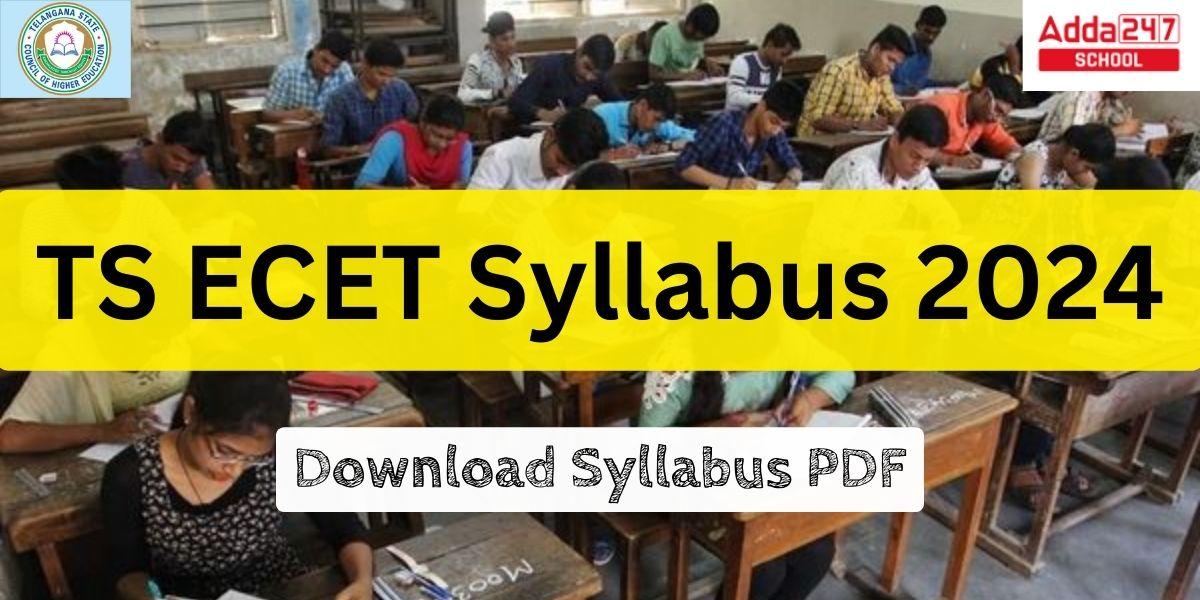

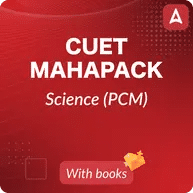
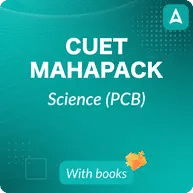


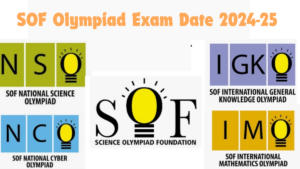 SOF Olympiad Exam Date 2024-25 Out, Chec...
SOF Olympiad Exam Date 2024-25 Out, Chec...
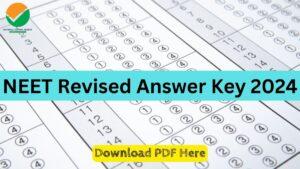 NEET Revised Answer Key 2024 Out, Downlo...
NEET Revised Answer Key 2024 Out, Downlo...
 Karnataka PGCET Admit Card 2024 Out, Dow...
Karnataka PGCET Admit Card 2024 Out, Dow...












